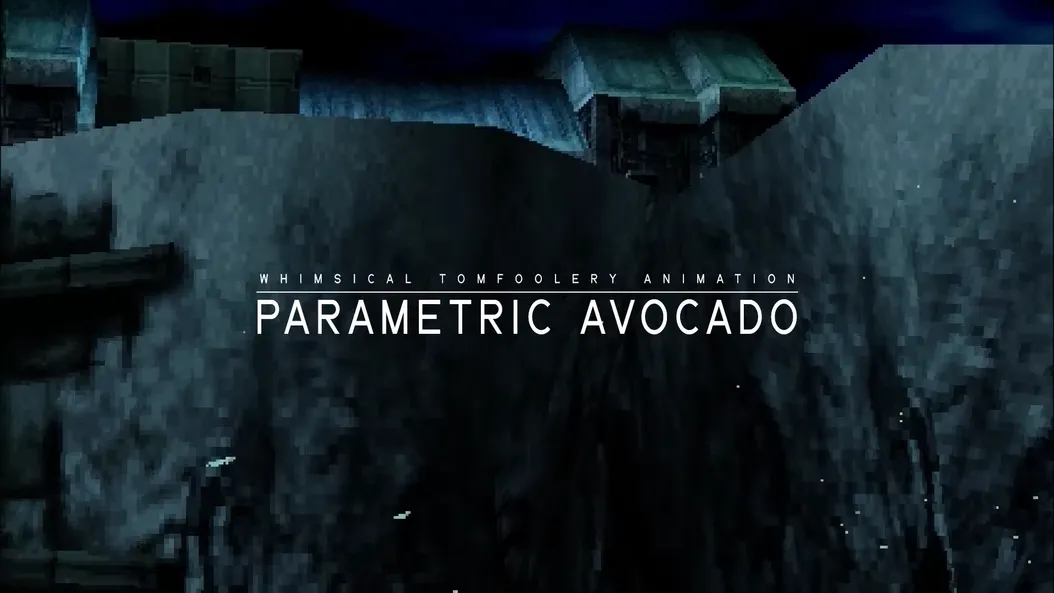Introduction: Should I care about Roblox? 🤔
You’ve heard of Roblox. If you’re a parent, you might be hearing about Roblox right this instant. If not, maybe you've seen the game’s eye-popping numbers:
- Either the #1 or #2 game in the US, depending who you ask [link]
- $4 billion valuation to a $45 billion IPO (with a later drop) [link]
- 77.7 million daily active users [link]
- Each playing 2.4 hours per day on average [link]
- Including half of all US youth age 12 to 17 [link]
We publish a weekly newsletter about culture and technology, so we see Roblox constantly. LEGO-headed Roblox memes and blocky anime battles are all over video platforms and Discord servers. But the platform’s thriving ecosystem of experiences and influencers remains baffling to nearly all adults, including us.
In 2020, the New York Times called Roblox “this generation’s version of going to the mall” [link]. But it’s a mall where half the stores are run by kids (is that legal?), salespeople pounce on you at the entrance to every shop, and some shady vendor around the corner claims to be selling Kim Kardashian’s sex tape. Many of the businesses are jokes, and others claim to do everything at once, like a 3-in-1 men’s hair product: they’re obstacle courses, role-playing games, and pet simulators all in one.
We wanted to understand what was happening in the mall. So we turned our red Roblox caps backwards and started greeting our fellow kids. After many hours and thousands of Robux spent, we returned with a list of reasons to care about Roblox, even if you don’t like the place. We’ve divided them into three sections for your convenience: the business, the games, and the culture.
Table of contents
Part One: Why is Roblox so huge?
- It’s the closest thing we have to a metaverse.
- It’s grown steadily for decades.
- It’s a training ground for developers.
Part Two: Why do kids (still) play Roblox?
- It draws you in through social networks.
- You can choose your own adventure.
- Gameplay diversity is its own draw.
- Nostalgia for childhood experiences is powerful.
- Its trends influence the wider world of games.
- It’s become a stage for other media.
Part Three: Why do I see Roblox avatars everywhere?
- Roblox fashion captures the online cultural zeitgeist.
- Its fashion scene continues to evolve.
- In-game shopping experiences mimic real ones.
Part One: Why is Roblox so huge?

It’s the closest thing we have to a metaverse.
Nobody wants to hear the word “metaverse” any more. Bundled with cryptocurrency, consumer VR, and generative AI into the nebulously defined concept of Web3, the metaverse so far has been bad tech demos and consumer-last product initiatives.
But companies are still chasing the dream. Though Disney folded their “metaverse” team in 2023, there’s still enormous investment and interest in metaverse platforms like Epic’s Fortnite, Microsoft’s Minecraft, and Meta’s Horizon Worlds. (In the last case, maybe just investment.) All of these platforms want to back into the coherent, profitable, wildly popular ecosystem Roblox already has.
The tech theorist Matthew Ball, who sort of staked everything on becoming “the metaverse guy,” defined the metaverse as
“A massively scaled and interoperable network of real-time rendered 3D virtual worlds and environments which can be experienced synchronously and persistently by an effectively unlimited number of users with an individual sense of presence, and with continuity of data, such as identity, history, entitlements, objects, communications, and payments.” [link]
While this conjures up images of Snow Crash/Ready Player One cyberscapes, it also describes plain old Roblox. Players pop into and out of millions of different 3D “experiences” that they select from a browser. Their clothes and aesthetic remain coherent as they participate in different games, exchange in-game currency, and interact with friends.
The gulf between tech-world hype and reality is vast. You still can’t bring an NFT of your dog into Rainbow Six: Siege, get work done in VR, or live inside of an Apple ad. But Roblox shows that a metaverse is both possible and highly lucrative. The company leaned into this last year, calling their platform “the tech stack for the metaverse.” [link]
It’s grown steadily for decades.
Roblox had a 15-year head start on its major competition:
Minecraft (green) takes off in the early 2010s, Fortnite (yellow) explodes in 2017, and a tiny blip of interest in “the metaverse” (blue) appears in 2020. Interest in Roblox, in red, grows steadily in the background year over year.
The company started in 2004 as Dynablocks, then changed the game’s name to Roblox and launched it in 2006. A mobile version followed in 2012. In 2013, developers began earning real-world money from their creations. The platform exploded in popular consciousness due to the pandemic in 2020, and went public in 2021. Its real growth falls in this period, between 2016 and 2021, when it ballooned from 9 million active monthly users to more than 200 [link].
Throughout all of this, Roblox has had one CEO: original co-creator David Basczucki, aka “Builderman,” whose avatar used to greet players on sign-up. (The other co-creator, Erik Cassel, died in 2013.) It’s wildly anomalous for any tech company, let alone a game company, to have such steady leadership over this span — no hostile takeovers, cancellations, or corporate mergers.
While players eventually age out of Roblox, it retains enough of them that that its daily active user growth looks like every platform’s dream:
BONUS: Is Roblox the promised land for brands?
The outside world takes notice when big brand activations happen in Roblox. Nike, Nerf, Ralph Lauren, Wal-Mart, and many others have created high-gloss worlds to explore. IKEA recently made a splash by offering to pay 10 players real money to work in their virtual store; they got 178,000 applications [link].
Yet IKEA’s heavily promoted experience, which also enticed players with “exclusive UGCs” (free items like a stuffed blahaj shark), has only about two million visits on the platform so far. By comparison, 3008, an unofficial horror game set in a thinly veiled version of IKEA — it’s the second result when you search “ikea” — has more than 2.1 billion visits.
Branded experiences seem to attract articles rather than Roblox players. With the exception of two well-made experiences that adapted game-y IP (Sonic Speed Simulator and Barbie DreamHouse Tycoon), "brand awareness" games do not linger in the Roblox consciousness. The crowd shows up for freebies and then departs, never to return to NERF Island or Walmart Glide & Seek. NIKELAND, once held up as an example of “how to do metaverse commerce right” [link], actually closed this year.
The only brand experience that often comes up organically in Roblox community discussions is 2021’s Chipotle Boorito Maze, which is popularly blamed for a 73-hour server outage (see “Days that will live in Roblox infamy” below).
It’s a training ground for developers.
There are more than 40 million games on Roblox (according to CNN), and some 3 million developers using the platform’s free, intuitive level-building tools. The company has worked to nurture this diverse creator ecosystem with a range of initiatives: their own asset store, an annual developer’s conference, and recently an in-game career center [link] and an AI assistant [link].
Some of these young developers turn into indie devs like Zeekerss, whose solo project Lethal Company made $52 million last year on Steam [link]. Others remain on the platform, subsisting on the Robux that flow to the top experiences on the Trending page.
Roblox games are usually free, but monetized through “boosts,” game passes, and tolls paid in Robux. A lot of stuff flies here that would outrage the mainstream gaming audience, like paying to respawn in a horror game, or offering players a chance to buy a Gold AK-47 in the first seconds of a survival game.
There’s a reason games push microtransactions so hard: the platform takes a hefty cut of everything developers make. Users can buy 1,000 Robux for $12.50, but devs cash out 1,000 Robux for $3.50. A 2021 investigation by People Make Games estimated that, due to the platform’s cut on every transaction and policy of paying devs in “company scrip,” their take may be as high as 83% [link].
Developers break down into three categories:
Hobbyists
Hobbyist developers make up the vast majority of the platform’s creators. Most never make any money, let alone clear the 30,000-Robux threshold required to cash out. Given the age of the playerbase, it’s fair to assume many of these are kids. The platform has been accused of exploiting child labor; Roblox claims “the majority” of developers who monetize are over 18. [link]
Roblox’s studio head also made waves (the bad kind) by referring to this as “a gift” to the users. “I can be like, 15 years old, in Indonesia, living in a slum, and then now with just a laptop, I can create something, make money, and then sustain my life.”
Professionals
While devs like Zeekerss springboard from Roblox to external game-making, others go pro simply through success on the platform. When roleplaying game Welcome to Bloxburg was purchased by (now-infamous) publisher Embracer for an astounding $100 million, its creator Shortcake AB was folded into their corporate structure and rechristened “Coffee Stain Gothenburg.”
The acclaimed indie dev Terry Cavanagh has also dabbled in Roblox. “I didn’t expect how much I was going to love working on Roblox studio,” he tweeted. [link]
Studios
A number of full-fledged studios make games within Roblox, including RedManta Studios, Rumble Studios, Badimo, and Gamefam. Roblox Corp has mentioned that some Roblox studios have grown to more than 200 employees. [link]
Part Two: Why do kids (still) play Roblox?
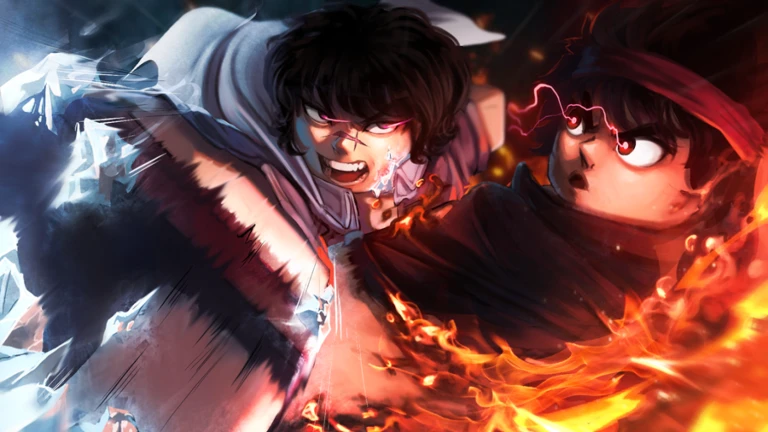
It draws you in through social networks.
Jumping into Roblox on your own can be disorienting. You load up an experience and are immediately confronted with layers of pop-ups, an unskinned default-looking user interface, and minimal tutorials. Everyone in chat has meme names and is trying to trade houses or babies with each other.
You could say Roblox is confusing because it isn’t “for” you — it’s for kids — but kids aren’t born understanding how to play Blox Fruits. They hear about a game at the lunch table, on Discord, or from TikTokers and YouTubers who provide “the missing tutorial.” They also hear about new games from their circle on the platform itself — Roblox Corp claims that 19.7M friends connect on the platform every day [link]. These social channels introduce games that don’t put much effort into introducing themselves.
Roblox titles don’t ease you into the experience with the breadcrumbs and incentives that mobile apps and retail games deploy. They start up fast and try to get you swept up in the action immediately; if you don’t understand what to do, just follow everyone else.
In some ways, Roblox is the inheritor of the amateurish, anarchic spirit of old multiplayer custom games made in Warcraft III and Garry’s Mod. If you played Dota or Elements Tower Defense back in 2005, you might remember they were confusing as hell; you needed someone else to show you how to play. Roblox games continue in that spirit, and often in literally the same genres, as variants of tower defense and Gmod's Nextbot Chase remain popular.
You can choose your own adventure.
Three of the top five most-visited games in Roblox history are social roleplaying (RP) experiences: Brookhaven RP, Adopt Me!, and MeepCity. These aren’t D&D-style roleplaying games. They’re all about hanging out, customizing your house and avatar, and pretending to have grown-up jobs and roles.
Many players really are role-playing their own Sims lives or GTA Online Jr. scenarios. One influencer described playing the earlier Welcome to the Town of Robloxia (2010) as a cop, driving around typing “sirens” in chat because the in-game siren didn’t work yet [link].
Roblox’s roleplaying scene seems to cover a lot of traditional “girl game” ground — more than Fortnite’s popular games tab, at least. The hugely popular Royale High, for example, is a dress-up-focused experience that prominently features royalty, fairy, and mermaid-themed realms. But roleplay games defy easy stereotyping: in 2021, Roblox released their own breakdown showing that Brookhaven was the most popular game for both boys and girls across age groups, and roleplaying games were broadly popular with all players [link].
These games aren’t totally freeform — Adopt Me!, for example, tasks you with grindy chores to get your pet eggs to hatch, and has an active economy with player trades happening constantly. But Brookhaven RP seems to have risen to the top of the heap because it’s so easy to start up and give yourself all the props you need. You instantly get a house and a baby (which is treated like an accessory or pet) just by hitting some menu buttons after spawning in. Never bet against instant gratification on Roblox!
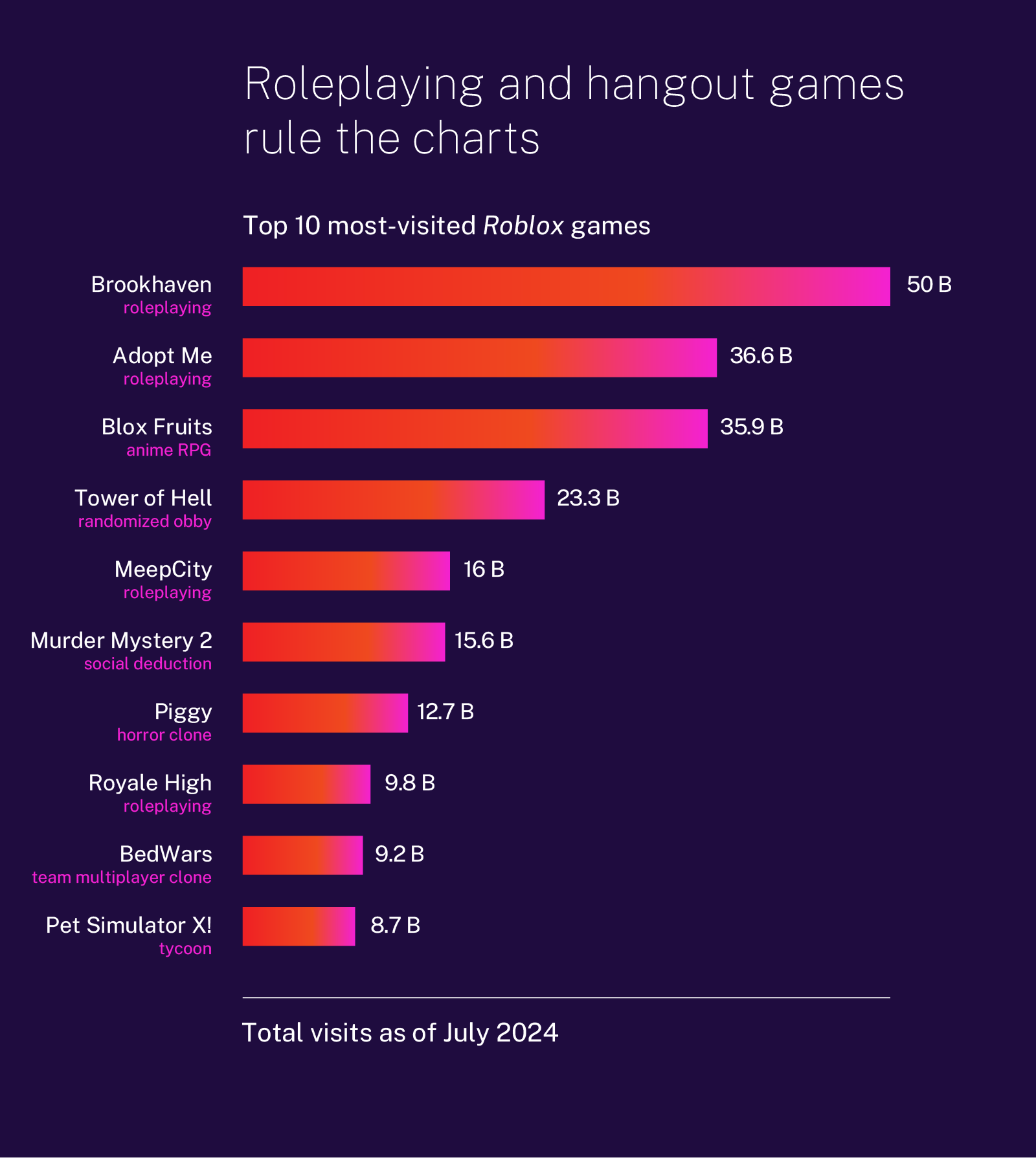
Gameplay diversity is its own draw.
Though roleplaying games have an outsize presence at the top of the charts, nearly all the players we spoke to pointed to the variety of Roblox experiences as the main reason they use the platform.
Obbys
One of the oldest Roblox genres, obstacle courses are probably the most pick-up-and-play addictive genre for people who don’t care about Roblox. The first Obby was likely a “training course” for a gaming clan [link], and you can still see those roots today — it’s hard to figure out what a gauntlet of finicky jumps and “killbrick” floor traps is training you for, exactly, but you feel a sense of progress as you master floaty Roblox physics. Games like the randomly-remixed Tower of Hell, which typically have no checkpoints and feature dramatic falls back to the beginning, anticipated the streamer craze for climbing rage games like Only Up!.
Clones
Many Roblox games are free-to-play copies of games that cost money or only exist off-platform. At the moment, popular titles like this include A Dusty Trip (see The Long Ride), Phantom Forces (see Battlefield), Piggy and Kitty (Granny), and BedWars (see Minecraft's Bed Wars). While “free” is enticing to cash-strapped kids, these games are often loaded with battle passes and paid items, making the supposed savings a bit of a façade.
Many other clones just copy existing Roblox hits, reflecting the platform’s gold rush mentality. Search for any popular Roblox game and you’ll also see a long tail of clones snaking down the page, many with names like “Brookhaven 2 RP,” and all with plummeting review scores.
Horror
The numerous horror games on Roblox resist generalization. They range from Dead by Daylight clones like Flee the Facility to narrative-driven experiences like the Resident Evil 7-inspired The Butchery to unique evolutions of haunted-house mechanics like Doors. But one overriding trend, epitomized by Rainbow Friends, is the continuing drift of the horror genre into a more kid-friendly zone of mascot characters and lore.
Anime
Anime games aim to translate the big moments of shonen anime into a new, much blockier world. Games like the popular One Piece-inspired MMO grinder Blox Fruits and the brawler Strongest Battlegrounds do a surprisingly solid job of translating the sense of speed and world-stopping gravitas of an anime showdown, thanks to careful adaptation of camera movements and sound.
Tycoons
Tycoons are an old genre that refuses to die; it feels like they’re wrapped up in the identity of Roblox itself. They’re idler games — clicking buttons, gathering resources, getting frustrated and paying Robux to speed things up — but classics like Lumber Tycoon 2 now seem almost quaint compared to more sophisticated grinding traps like Pet Simulator 99.
These days, tycoon games are a meme format often used by developers like Badass Experiences, who made the recent My wife left me tycoon. DreamWorks is currently making a Shrek Swamp Tycoon in Roblox, but it remains in beta.
Gambling
Many big Roblox games, like Adopt Me!, feature lootbox mechanics that spur players to gamble for a chance to win rare items. Recently, a pure skinner box game called Sol’s RNG has become massively popular, although there’s basically nothing to do in it except unbox skins (“auras”) and wait to get something rare. This has led to other variations like Admin RNG, where players roll (cueing slot machine sounds) for a chance to unlock admin commands.
BONUS: What are real Roblox players saying?
While playing Roblox, we often asked other players what they thought of the game or Roblox in general. Eventually, we found a more direct way to interview players: entering lobbies in the e-begging game PLS DONATE and giving kids Robux to answer questions.
Tl;dr: Roblox players love roleplaying, play both RP and action games with friends, and see variety as the platform’s greatest strength.
When asked about their favorite games, most players’ picks were from the top of the charts: social roleplaying game Adopt Me!, anime MMORPG Blox Fruits, dress-up game Dress to Impress (“dti”), social deduction game Murder Mystery 2 (“mm2”), multiplayer action game BedWars, or asymmetric horror game Survive the Killer (“stk”).
Several players mentioned Murderers vs Sheriffs Duels (“I 1v1 my friends in murd vs sheriffs”), an interesting game that doesn’t have a clear non-Roblox analogue. It’s a third-person team-based shooter that’s built to highlight trickshots and flashy melee plays [link].
Nearly everyone was into roleplaying games. One player mentioned liking a GTAish cops-and-robbers RP game, Emergency Response: Liberty County. (“You can have a gun…and be criminal.”) Another player mentioned liking Blox Fruits for the “grinding,” but when asked if he liked any “other RPGs,” he named the social RP game Brookhaven — illuminating the difference between our old-timer sense of the word (to mean, like, Final Fantasy) and its meaning in Roblox (social roleplaying).
Most players didn’t make any bold guesses when asked what games they thought would be popular in future — most named stuff that was already big, like “Escape the X” obbys. One called out Head Hunter, an ambitious parkour/melee deathmatch game that died out but has been promising a “revival update.”
When asked what they liked about Roblox itself, almost everyone pointed to the platform’s variety of gameplay experiences. Some were confused when asked to compare it to other games. “ii only roblox man,” said one interviewee, who was dressed as a Cinnamon Toast Crunch square in a top hat.
Nostalgia for childhood experiences is powerful.
Did we mention Roblox has been around since 2006? There are people with an adult job and 2.5 kids who remember old Roblox games the way that millennials remember Super Mario World. But revisiting old games isn’t just popular among the platform’s elders. The influencer Remainings has made videos where he returns to admire Roblox games that came out when he was just three years old [link]. It’s clear that modern users remain fascinated by the platform’s past, even if they weren’t around to see it.
Galleons — 2008
Dating from Roblox’s true Playmobil-looking era, this badass competitive multiplayer game split players into two teams of pirates that each had to steer their own ships, fire the cannon, etc. Like a lot of the best Roblox stuff, it used the platform’s fast-reset playground mindset to throw players into a weird experience that has no mainstream equivalent.
Work at a Pizza Place — 2008
While “job sims” like Supermarket Simulator took years to bubble up to the mainstream, Robloxians have been making an honest buck slinging pies for more than 15 years. The atmosphere is much more chaotic than an Overcooked-style co-op game, partly because the roles are more diverse (cashier, delivery, supplier, cook), but also because anyone can walk into the kitchen, mess up all the pizzas, then jump into the oven and kill themselves.
Natural Disaster Survival — 2011
This is almost the perfect low-stakes hangout game. Dozens of players get dropped into a random map, then a disaster (or multi-disaster) strikes, and everyone is left scrambling for high ground / sprinting away from other players / running for the basement. Everyone who dies returns to a floating platform to watch the chaos from above.
Flex’s Wayback Machine
This game/app emulates more than 100 of the oldest 2006-07 Roblox games. (The name is a reference to the Internet Archive’s web preservation project.) Preserving and revisiting these games is of special interest to old-school Roblox creators, as many of the experiences run oddly in the modern client, have been heavily revised, or were deleted outright.
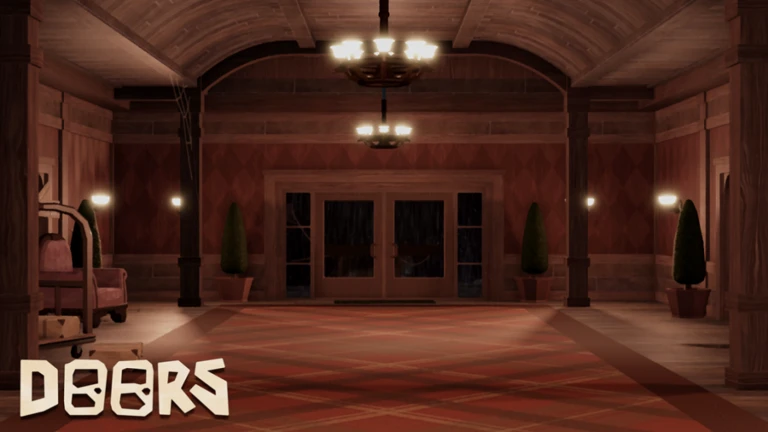
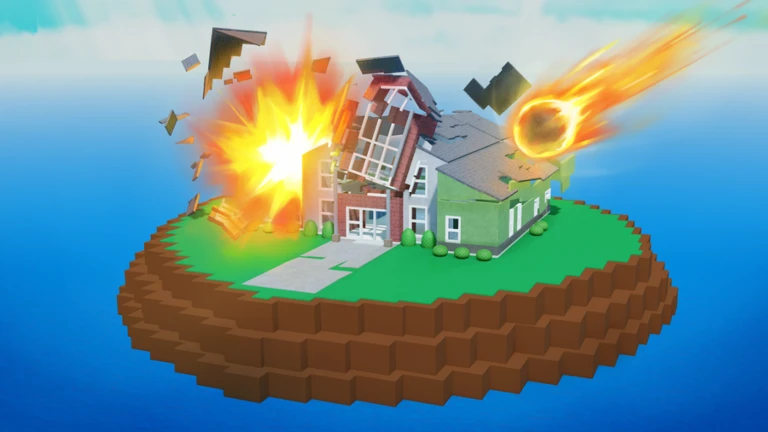
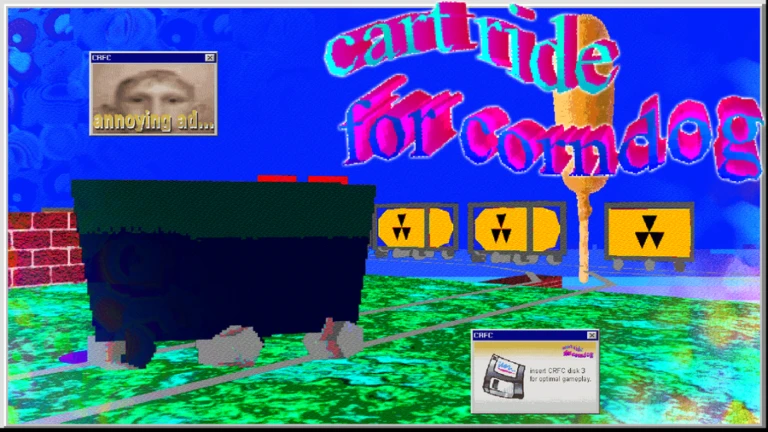
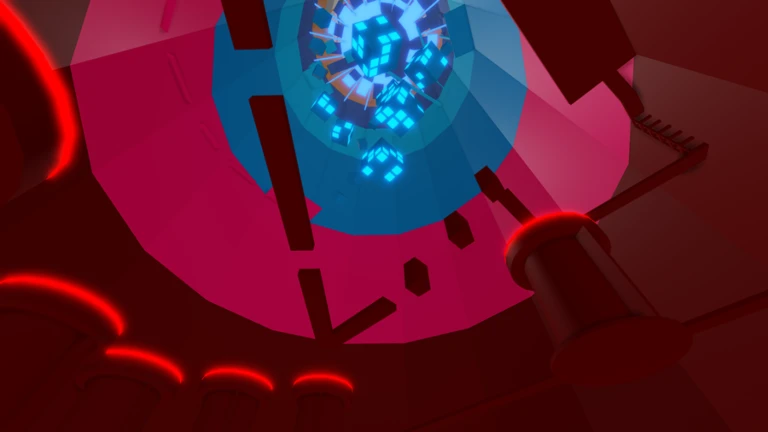
Roblox games we actually like
Doors
Natural Disaster Survival
cart ride for corndog
Tower of Hell
Its trends influence the wider world of games.
The climbing game Only Up!, which was briefly all the rage among streamers in June 2023, was clearly descended from two things: Getting Over It with Bennett Foddy and the endless 3D jumping puzzles of Roblox obbies. A wave of Roblox Sisyphus games and TikToks [link] in summer 2023 preceded the Steam release of similar streamer-bait The Game of Sisyphus in early 2024.
Similarly, just last week, the yell-at-your-friends game Chained Together made the rounds on YouTube; it seemed like an evolution of the earlier Roblox climbing-rope game Altitorture, as well as a whole subgenre of experiences with names like Pull a Friend and Carry A Friend.
There’s such a chaotic mix of concepts on the platform’s games tab — and so much of it is ripping off something else — that it’s often hard to tell whether a specific idea came from Roblox, was further developed through the platform’s clone wars, or was simply copied from somewhere obscure off-platform.
But there are certainly influential ideas that radiate outward from Roblox, like the Sisyphus ragers. Or the Garry’s Mod Nextbot Chase games (where you get chased by loud .pngs of monsters) that inspired Roblox’s Evade, which in turn inspired the elevated co-op experience of Doors, which will in turn surely inspire some kind of forthcoming indie/AA haunted house trend on Steam.
BONUS: The scourge of ODers
ODers (pronounced Odors), or online daters, are Roblox users engaging in erotic role play (ERP), or what Gen X used to know as “cybering.” Their continuing presence in Roblox hangouts and roleplaying communities shows that chatrooms never change, even as ‘90s IRC channels evolved into the Roblox/Fortnite lobbies of the 2010s.
Online dating is officially banned in games like MeepCity and Roblox High School, which have been associated with it for years. However, ODers seem ineradicable, and many rule-abiding roleplayers find them annoying.
In 2022, the BBC ran an article about the most salacious instances of LEGO-looking swingers in “sex condos” in MeepCity [link]. But in many games, ODers are more of a minor disruption that appears in the chat window (which is also often disrupted by coded profanity, racism, etc.) ODers spark conflict: normal players vs. rule-breakers, younger kids vs. older kids, adult Roblox YouTubers vs. people putting them in an awkward position.
For all these reasons, ODers have become a type of stock villain in kid-focused Roblox content, whether that’s YouTuber sketches (“Spying on BROOKHAVEN ODERS as a BABY…”) or the feature-length “Roblox film” The ODer [link].
It’s become a stage for other media.
Some creators are telling stories not just about Roblox but also through Roblox. A Roblox plugin called Moon Animator has emerged as a more accessible alternative to Blender or Maya, giving animators an easy way to work with Roblox avatars and environments.
Animated Roblox sketches appear on both YouTube and TikTok. These include:
- “Slice-of-life” sketches set in Brookhaven RP or MeepCity, often centered around life at school or home
- Recreations of viral videos, including recordings of Zoom meetings and sketches originally set in other games
- Sketches about social dynamics between players in PVP games like The Strongest Battlegrounds or Murder Mystery 2
The clips fit right into today’s short-form video landscape, which is defined by remixing and re-appropriation. Audio clips serve as narrative templates; creators uncover new meanings by switching up the context. Roblox has become a lens through which Gen Alpha players reinterpret the internet and rework stories to suit their own style.
BONUS: The Steven Spielberg of Roblox
Much as kids used to animate movies in Flash, Windows 3D Movie Maker, or HyperStudio, they now make them in Roblox. Probably the easiest way to get a feel for this genre is by watching an old short like “Out for Bloxy Cola,” which captures the general vibe: extended imitations of action movies [link].
But creators’ ambitions have grown over the last decade, leading to full-length voice-acted movies like the 84M-view The Last Guest (A Roblox Action Story) [link]. Its creator, ObliviousHD, is without a doubt the leading auteur within Roblox — he also created Guest 666 and the unfinished megahit The Bacon Hair, which spawned a 214M-view music video.
These longish action-melodramas about Roblox archetypes aren’t a rewarding watch for first-time adult viewers, but the comments are full of nostalgic viewers revisiting them in their old age (late teens). There’s been a lot of fan speculation about why ObliviousHD disappeared in the middle of his last project, but it seems pretty plausible that a 21-year-old might have just lost their passion for making Roblox movies.
Part Three: Why do I see Roblox everywhere?
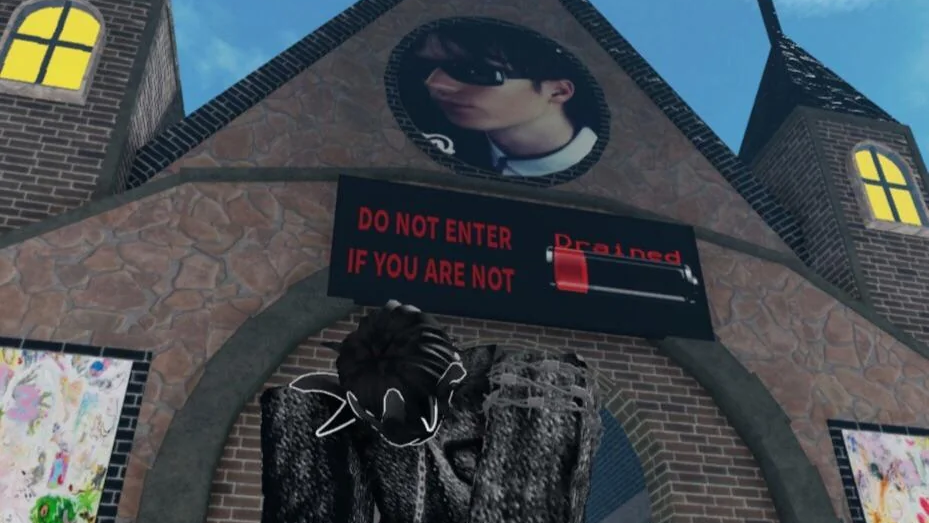
Roblox fashion captures the online cultural zeitgeist.
Roblox culture revolves around avatars — a persistent identity made of digital goods bought by the player. That’s where all the Robux go: players bought 1.6 billion cosmetic items in the first nine months of 2023 [link]. If you want to argue that Roblox is a metaverse, avatars are the key.
Avatar trends reflect online culture. Icons from mascot horror games (Poppy Playtime), seasonal anime shows (Jujutsu Kaisen), and other popular YouTube phenomena (Skibidi Toilet) circulate through avatar marketplaces. It’s an ecosystem that rapidly adapts to new trends, matching the pace of shortform video platforms.
As a result, designing avatars demands both technical skill and cultural savvy. For most of Roblox’s lifespan, Roblox Studio has only helped with translating 3D models into avatar pieces, and designers have had to rely on off-platform tools like Blender or Maya for modeling and animation. However, Roblox Corp has spent the past few years building systems that encourage all users to become vendors of cosmetic UGC, loosening prior restrictions on who can sell their work on official marketplaces.
This past March, for example, Roblox Corp released the “Rights Manager,” a program that assists copyright holders in issuing takedown requests [link]. Until recently, Roblox users needed to apply to the game’s “UGC Program” to sell anything; in April, however, Roblox Corp announced that any user can sell UGC so long as they’re ID-verified and a premium subscription holder [link].
BONUS: Days that will live in Roblox infamy
April 1, 2012 - The April Fool’s Day hack
- The user @Ellernate (and friends) got access to the Roblox admin panel through a simple-sounding method where they made a dummy admin account on a test site, then copied the security cookie. They then banned innocent users, unbanned villainous users, added items to the store, added banners to the homepage, gave out Robux, and caused a temporary site outage.
February 29, 2020 – The Tubers93 hack
- In a series of attacks, a user known as Tubers93 gained admin powers in MeepCity, a perenially popular hangout space. In the chaos that followed, they hung an effigy of the game’s owner and encouraged others to hit him like a pinata (which less reliable wikis report played an “18+ sound effect”), distributed in-game currency, and spammed a lot of Islamophobic text. They also turned the "Quit Game" screen into a picture of their avatar and removed the option to leave. The hacker became a sort of Roblox folk hero after this, although it isn’t clear whether it was one person, a group, or a mantle that was handed down between players.
October 28, 2021 – The burrito incident
- The Roblox servers were down for 73 hours starting on Oct. 28. Many users speculated this was due to the popularity of the “Chipotle Boorito Maze” Halloween experience, which was a great deal — you got a free burrito just for logging in! Roblox Corp officially denied any connection.
Its fashion scene continues to evolve.
Avatars come in different “rig types” that determine how articulate different models are. There are currently three supported types: R6, R15, and Rthro. The numbers 6 and 15 indicate how many “joints” the avatar has; more joints means more articulation and detail. Rthro rigs, on the other hand, support both experimental avatars and more realistically proportioned ones.
Though the avatar has more or less stayed true to its LEGO-inspired roots, it’s undergone a number of changes since the platform’s inception. Here’s a brief timeline:
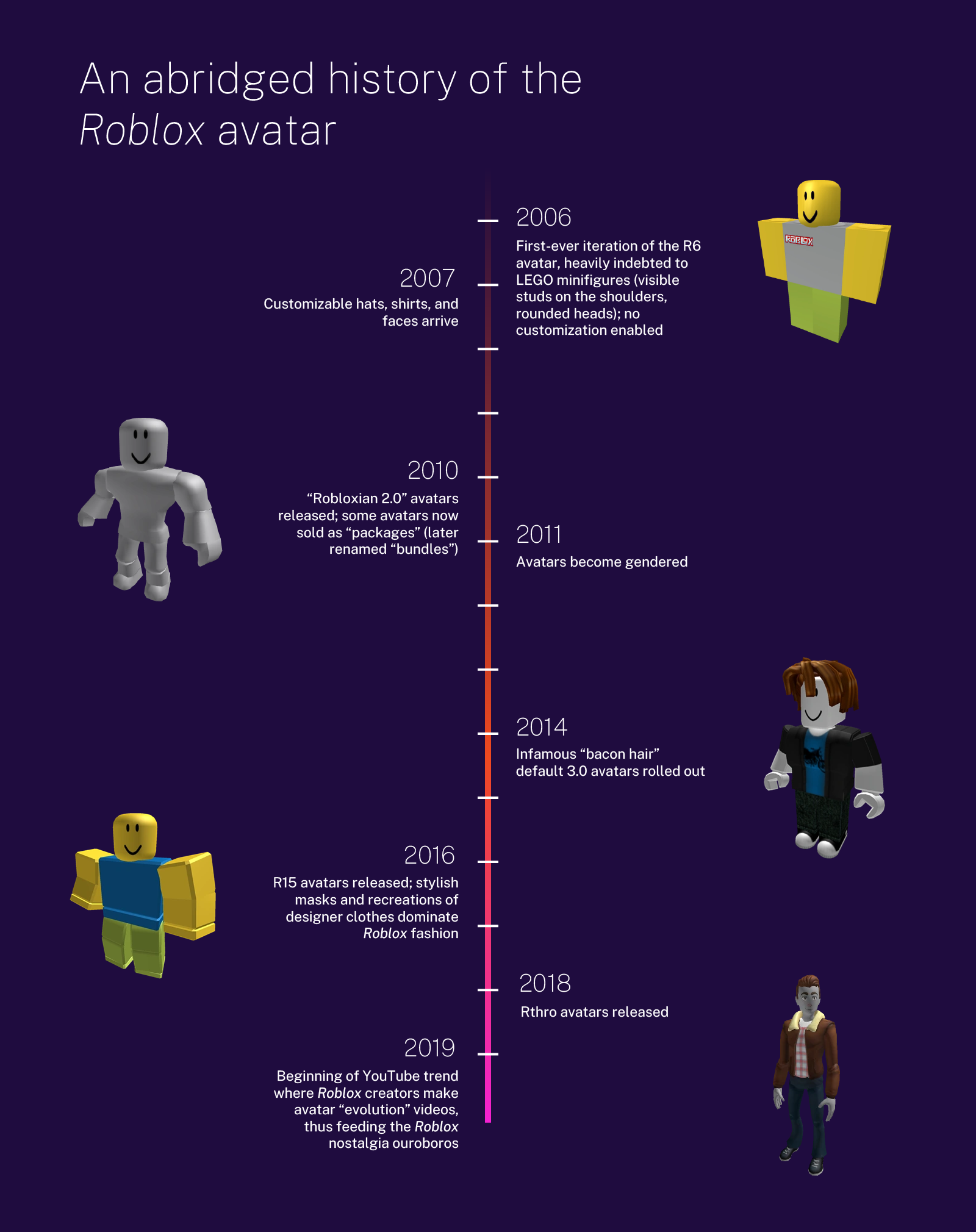
In-game shopping experiences mimic real ones.
Avatar tastes are fickle and largely depend on the player. For example, to some players, the shriveled right leg piece of the Korblox Deathspeaker set [link] — one of the most expensive sets on the market — is a goofy-looking badge of pride; for others, it’s an obnoxious status symbol flaunted by Roblox’s one percent.
An easy way to gauge the state of Roblox avatar trends is to consult the playerbase’s favored avatar customization tool. Catalog Avatar Creator, a Roblox game, is currently the most popular choice for assembling avatars and browsing UGC [link]. The 2.2B-visit experience has become a Rosetta Stone for decoding the shifting tastes of Roblox’s Gen Alpha population.
CAC fits neatly into the conception of Roblox as a metaverse or mall. It’s a social dressing room where users can try avatar pieces on for free, then purchase them to wear in any game that supports their avatar rig. Avatar designers set up shops and organize their items into themed collections, making it a more immersive alternative to the native marketplace browser.
CAC’s marketplace, like Roblox’s game browser, is full of bootlegs. The most popular vendors sell avatars that reference pop culture, especially other games and anime/manga.
dvdko is one prominent example. As CAC’s most visited store (6.6M visits), dvdko reflects many of the current tastes of Roblox’s playerbase. One collection features chibi skins inspired by The Amazing Digital Circus, Adventure Time, and Five Nights at Freddy’s. There are also dedicated sections for Hoyoverse games (Genshin Impact, Honkai: Star Rail), vtubers (mostly members of Hololive like Gawr Gura or Inugami Korone), Roblox horror games (DOORS, Rainbow Friends), and anime (Attack on Titan, One Piece).
“Skibi Toilet UGC Store,” CAC’s 2nd-most popular store (5.6m visits), features incredibly detailed Rthro recreations of characters from the Skibidi Toilet universe.
Other trends include:
- “Realistic” recreations of characters from across the landscape of internet horror, from mascot horror games like Rainbow Friends and Poppy Playtime to creepypastas like Slenderman or Sirenhead
- “Halloween”-themed avatars of original characters, mostly tending towards the monstrous or demonic
- Riffs on the default Roblox avatar, especially ones that make him look jacked or convert him into a personified Wojak
- Avatars that incorporate entire set pieces, transforming them into walking dioramas
- Sloppy adaptations of memes, usually in the form of a hastily imported .png
- “Alt” fashion that borrows from hyper-online aesthetics, from pastel goth to e-boy-flavored hypebeast streetwear
As a kid-friendly platform of massive scale, Roblox inherits all of the struggles that plagued older platforms like Second Life and Habbo Hotel. This manifests in lewd avatar pieces that flirt with violating the terms of service but maintain a plausible ambiguity. Sexually suggestive avatars are a well-known problem [link]. If you open the “trending” tab on CAC, you’ll see a host of avatars wearing light S&M gear or ahegao-like facial expressions.
Epilogue: So, should I care about Roblox?
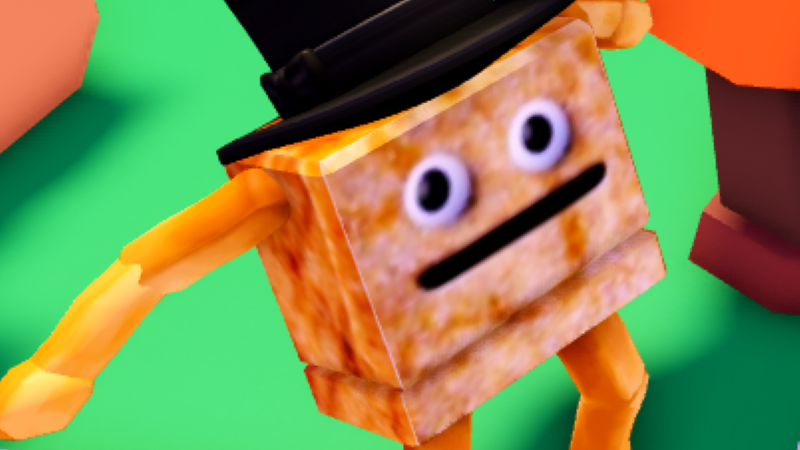
We've talked about the games, the fashion, and the numbers. We've talked to a Cinnamon Toast Crunch square about why he likes BedWars. After all that, should you care about Roblox?
Yes, if —
You have kids. They’re probably playing it right now.
You are, for some reason, invested in the idea of the metaverse. Roblox isn’t just the blueprint for the metaverse; it’s the only one of the major competing entities with a ground-up creative culture.
You care about internet culture. If you want to understand the internet, you have to understand games. Game ideas, memes, fashion, and developers themselves flow freely from the Roblox-verse into the wider web, making it essential background.
You care about game history. Games like Work at a Pizza Place and Natural Disaster Survival are notable in their own right — not because they inspired other games, but because they’re actual mainstream gaming hits that rarely get mentioned outside Roblox communities.
You're curious about the future of games. Kids who grew up on Roblox are now designing new games and social experiences that will reshape the internet.
You want to know what the hell is going on. Have you seen a singing nugget on TikTok with a familiar face? Have you been threatened by a smirking man with a red dodgeball? Where do these things come from? Roblox. It’s always Roblox.

